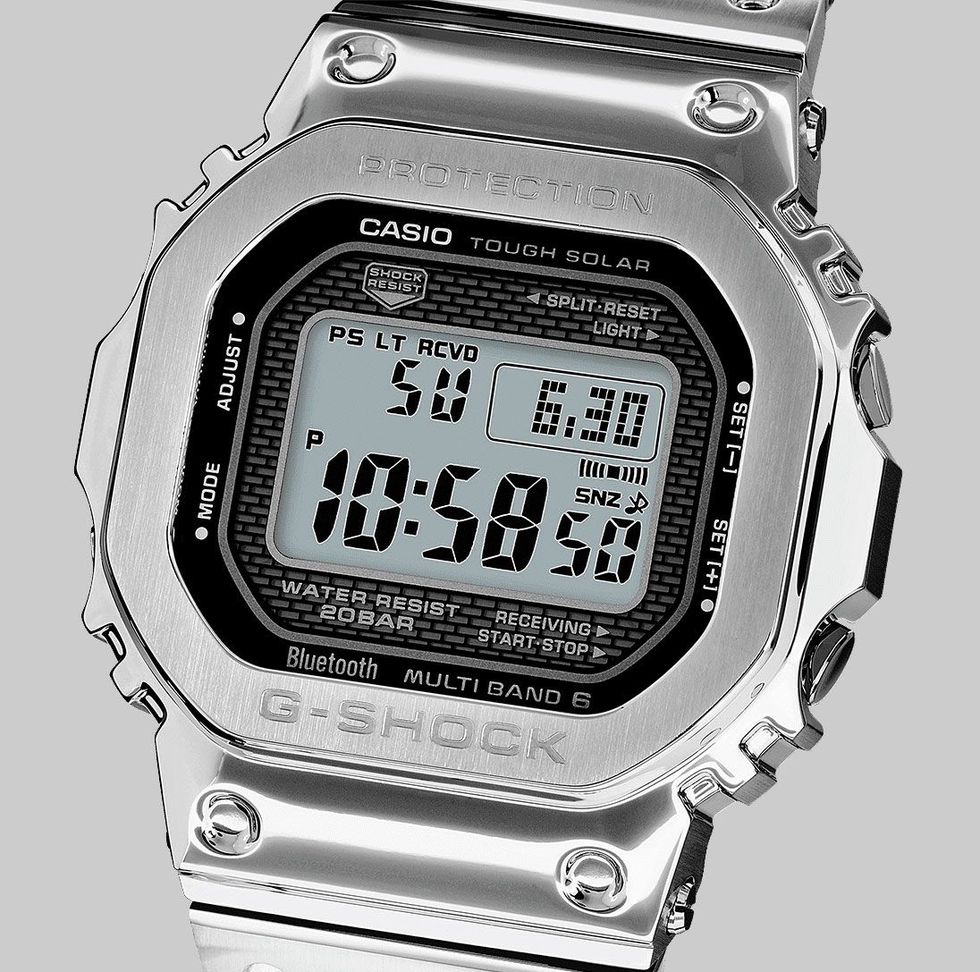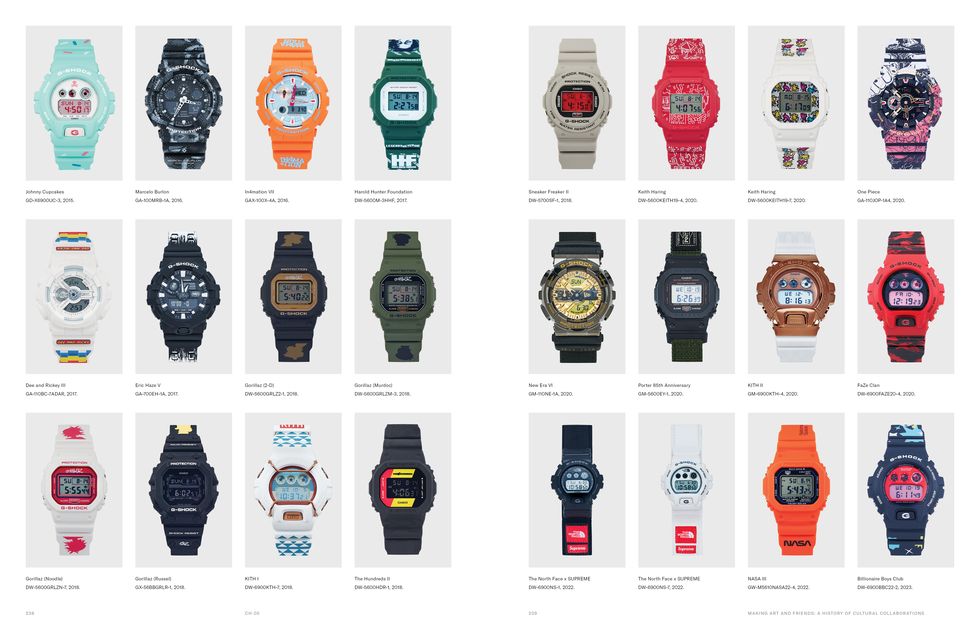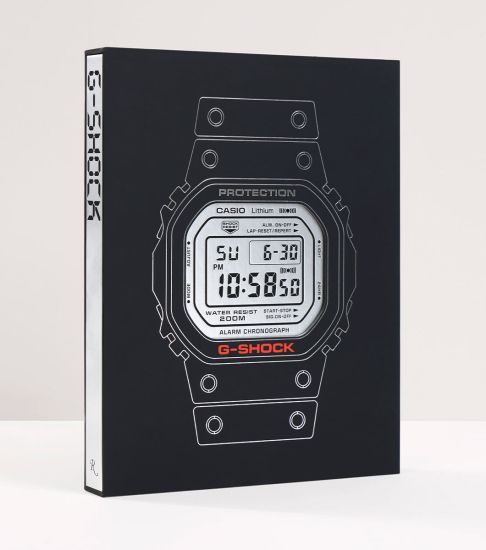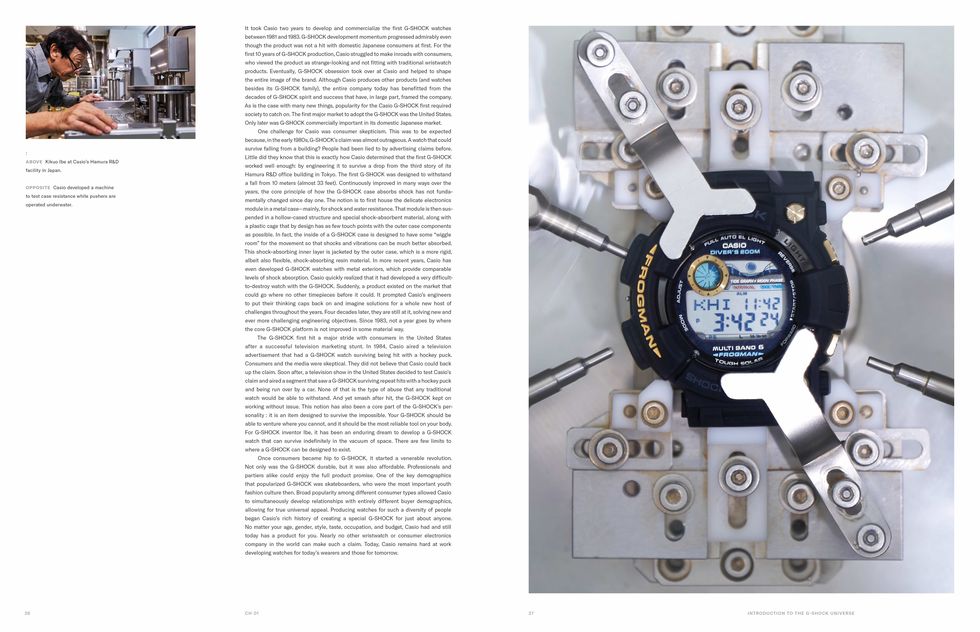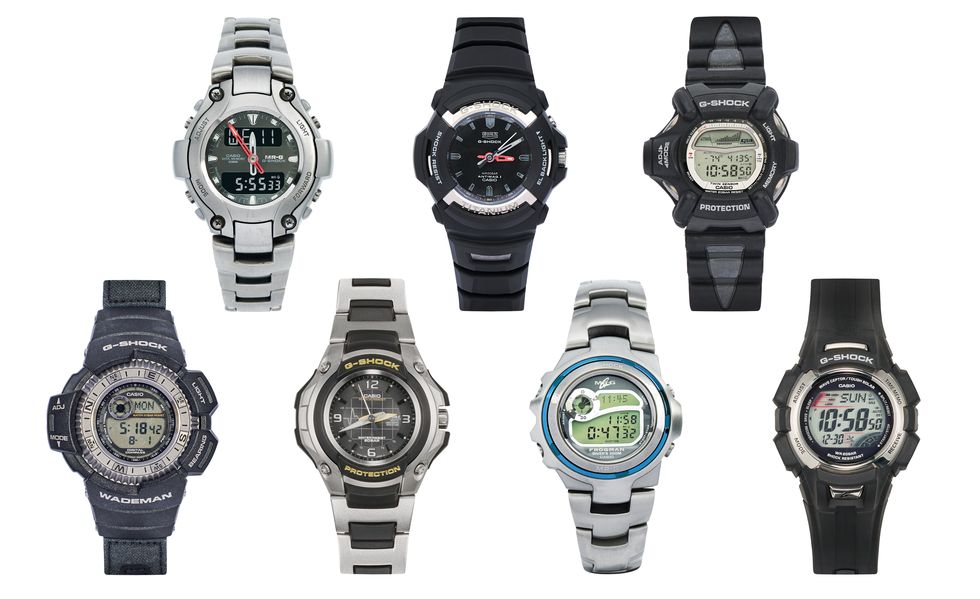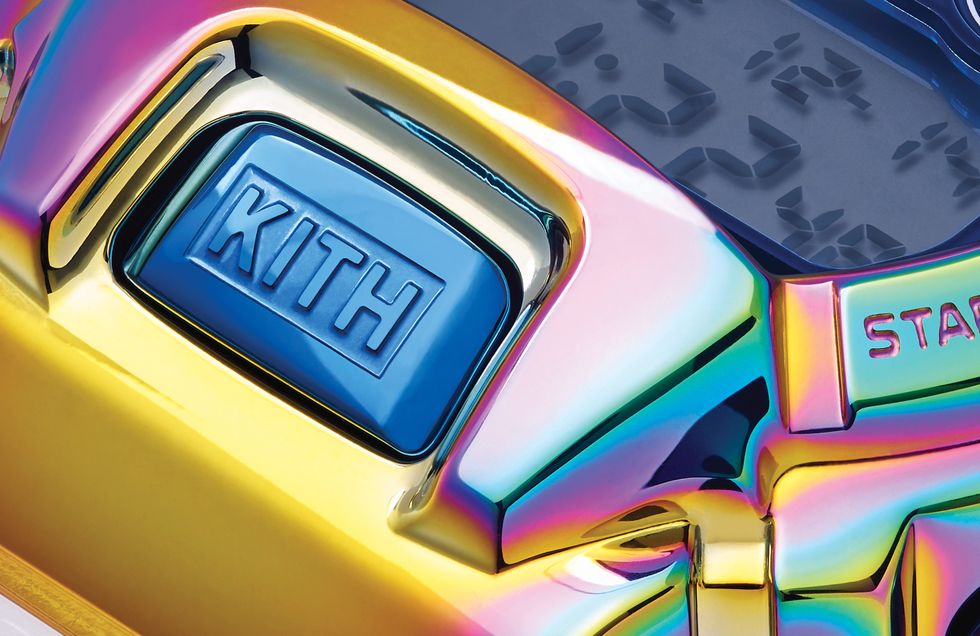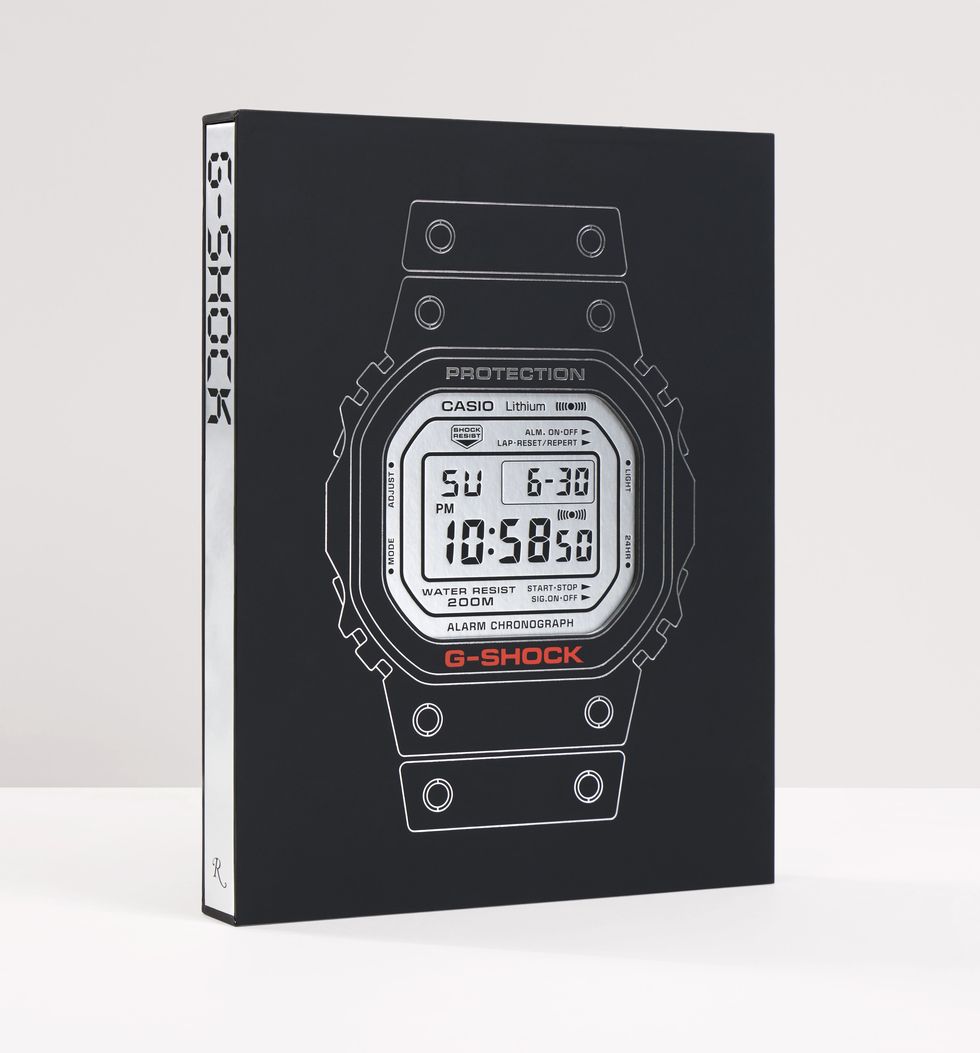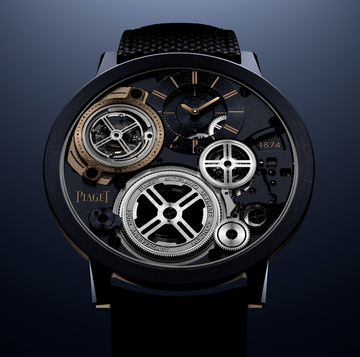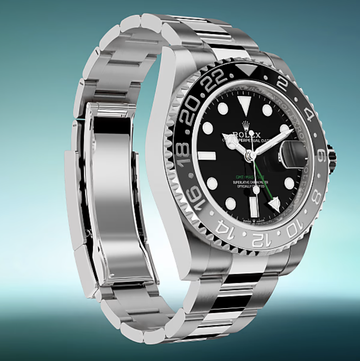Is there another watch brand as universally liked as G-Shock?
As Ariel Adams writes in a new book that gives 'The Toughest Watch of All Time' the 256-page, hard-backed, slip-case treatment, marking its 40th birthday: ‘Ask almost anyone and they will have a story about a G-Shock in their life. Maybe it was an early watch given to them as a child. Maybe they relied on a G-Shock for an adventure or sports. For many people, a G-Shock simply represented the ultimate in convenience…. a life-proof product designed to be as reliable as it is useful.’
As a wrist-statement something mechanical and Swiss will almost always make the bigger impression. But it’s just as easy to find people – watch nerds, as well as normal people – sniffy about any of the big-ticket brands you'll see behind the glass in Watches of Switzerland.
But G-Shock? Everyone loves G-Shock.
Casio’s rugged electronic mainstay remains in a category of one: endorsed by everyone from the military to hypebeasts, snowboarders to students, rappers to w/Watches Redditors. The fact that Dr. Rebecca Struthers, master watchmaker and one of the UK’s greatest-living horologists, collects G-Shocks really isn’t that, well, shocking.
In colourful text and even more colourful photos Adams’ book G-Shock doesn’t have to work hard to make the case for four decades of drool-inducing design excellence.
As it sets out, when G-Shock designer Kikuo Ibe joined the Japanese company in 1976, electronic watches were less than two decades old, and the writing was on the wall for traditional timepieces powered by springs. New-fangled and cheap quartz models were the future.
Except Ibe came up with something a bit different.
Legend has it that in 1981 he dropped and broke the graduation pocket watch given to him by his grandfather, smashing it beyond repair. So Ibe set to work on a watch case that knocks and falls wouldn’t damage, using novel materials that mimicked the shock-absorbing effects of a basketball, and setting the innards of the watch so they'd ‘float’.
The first model, the DW-5000C, was made to meet three design criteria, the so-called ‘triple ten’ – being able to withstand a 10-meter drop, survive 10 atmospheres of water pressure, and have a battery life of 10 years. To test it, Ibe threw prototypes from the window of Casio’s high-rise Tokyo HQ. (There are pictures of this.)
After two years in R&D, G-Shock launched in 1983 to scepticism. The following year a US TV advert that showed a G-Shock standing in for an ice hockey puck and being whacked around a rink did little to change people’s minds – what was this advertising hype?
But then the design was picked up by skateboarders – pretty much the perfect demographic for a watch that would come to have no barrier to entry, regardless of age, gender, style, taste, occupation or budget.
Next Casio set to work on the idea of making its G-Shock an ‘autonomous watch’, one that would require as little interaction from the wearer as possible. Over the next few years, it developed systems to negate replacing batteries, adjusting the time and accounting for changes in time zones, as well as doubling-down on the G-Shock’s abilities to survive cold, heat, shock, water immersion, being crushed by vehicles, etc.
Sales took off through the 1990s, and by 1998 Casio had released more than 200 different G-Shock models, with worldwide sales said to stand at 19 million units.
The Antman, released in 2000, was the first G-Shock to include a module with a built-in antenna capable of receiving radio signals from always-accurate atomic clocks. In 2012 the G-Shock GB-6900 boasted Bluetooth connectivity and the ability to pair with your smartphone and announce messages and notifications. The G-Shock G’Mix used Bluetooth to control a music player. Further models added pedometers, heart rate monitors and other whistles and bells.
Adverts positioned the watch as a versatile active lifestyle accessory – targeting surfers, snowboarders, American football players, astronauts, construction workers and, again, skateboarders.
Other milestones included the first hybrid analogue-digital model, which appeared in 1989. The first true diver’s watch, the Frogman DW-6300, in 1993. And the first Titanium model, the Frogman DW-8200, in 1995.
The Master of G series was used as a testing ground to introduce new features that would find their way into standard production models, the line-up reading like someone had been let loose with a Sharpie and a whiteboard at a brainstorming meeting: Lungman, Fisherman, Seaman, Antman, Gulfman, Rangeman, Mudmaster, Gulfmaster, Gravitymaster, and so on.
Indeed, the G-Shock’s enduring popularity is surely down to how well its design lends itself to being used remixed, repackaged and sub-branded.
While the original design was the epitome of form-follows-function, the beefy and technical shape of the DW-5000C is now overshadowed by an ever-multiplying family of colourful and quirkily-shaped siblings.
Starting in 1997, Casio developed various transparent and semi-transparent resin cases, later blending them with organic textures and laser-printing.
This created open-season for colourful collaborators, a list of which includes, but is by no means limited to, Takashi Murakami, Super Mario Bros, Wu-Tang Clan, Stüssy, Billionaire Boys Club, Kith, Supreme, Maison Margiela, John Mayer, Gorillaz and Transformers – as well as institutions including Nasa, McDonald’s, FC Barcelona and the Japan Coast Guard.
There are also high-end models represented by the MT-G (‘Metal Twisted’) and MR-G (‘Majesty & Reality’) lines, using precious materials usually associated with the high-end luxury watchmaking Casio initially disrupted.
To be a G-Shock collector, then, is to be faced with an embarrassment of richness – without necessarily breaking the bank. Most of the current collection is under £200, even with whizzy tech like solar charging (Tough Solar) or atomic timekeeping (Multiband) built in – and much of it under £100.
Kikuko Ibe’s dream had been of ‘creating a watch that never breaks’, now marketed under the banner ‘The Toughest Watch of All Time’. As G-Shock makes plain he also came up with something that could survive the test of time. Four decades on, the G-Shock remains endlessly cool and fun.
Really, what more could you want from a watch?
G-Shock is out now, priced £60.
